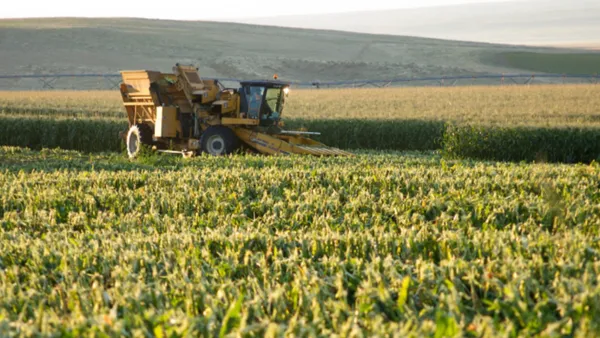Dive Brief:
- Wendy’s will close a number of outdated restaurants in underperforming areas where average unit volumes are about $1.1 million and operating margins are well below the system average, Kirk Tanner, Wendy’s president and CEO, said Thursday during an earnings call. These closures will strengthen the overall health of Wendy’s system Tanner said.
- Total closures in 2024, including 140 more in the fourth quarter, will offset new restaurant openings, making net unit growth about flat, CFO Gunther Plostch said.
- The chain, which posted U.S. same-store sales growth of 0.2% for the third quarter, expects to open 250 to 300 new restaurants globally this year, according to an earnings presentation.
Dive Insight:
Other chains have been closing underperforming locations to strengthen their overall operations while maintaining new unit development plans. Denny’s, for example, plans to close 150 restaurants by 2025 that have low unit volumes while still leaning into new builds and remodels. Shake Shack closed nine poorly performing restaurants earlier this year, but expects to open 75 restaurants this year.
During the first nine months of the year, Wendy’s closed 111 units systemwide, including 78 franchised units and six company-owned units in the U.S., according to a U.S. Securities and Exchange Commission filing. The chain ended the third quarter with 7,292 units globally, compared with 7,166 a year ago.
Wendy’s has been using data-driven insights to target high-growth trade areas that have led to unit volumes over $2 million and above-average operating margins above the average, Tanner said. These restaurants typically have better customer experience thanks to new technology and improved drive-thru and delivery operations. They also have higher employee satisfaction levels with more efficient labor models.
In 2022, Wendy’s Next Gen prototype became its standard build for new restaurants. This design includes a delivery pickup window, mobile ordering parking space and in-store shelving for digital orders, and redesigned kitchen layouts.
“Overall, Wendy’s system is incredibly healthy,” Tanner said.
Wendy's U.S. same-store sales
To keep its system healthy, management conducted a “robust review” of individual restaurants to make sure that they are meeting expectations for sales and have the profitability to sustain growth, and can provide a great customer experience, Tanner said.
“I have made the strategic decision to close additional restaurants this year that are outdated and located in poor performing trade areas,” Tanner said. Over time, new builds will replace many of these restaurants in areas with better sales, profitability and an expected AUV of over $2 million.
The restaurants set for closures are sprinkled throughout the U.S. and not tied to a specific region or market, Tanner said. Taking in the broader picture, these don’t represent a significant amount of closures, he added. The chain still has the white space to add roughly 1,000 units to the U.S. and a great deal of potential internationally to reach its market penetration goals.
Wendy’s expects new units to be split 70% international and 30% domestic in the future. Following the addition of franchise incentives in the U.S. in 2023, the chain is also providing incentives in Latin America and Canada to accelerate growth in those regions, which have already led to many development conversations, Tanner said.
The chain also has development commitments in place allowing Wendy’s to meet its new build goals and support its outlook for 3% to 4% net unit growth in 2025, he said.
“By the end of 2024, we will have opened more than 500 new restaurants over the last two years and have the confidence to deliver elevated growth in 2025 and years to come,” Tanner said.















